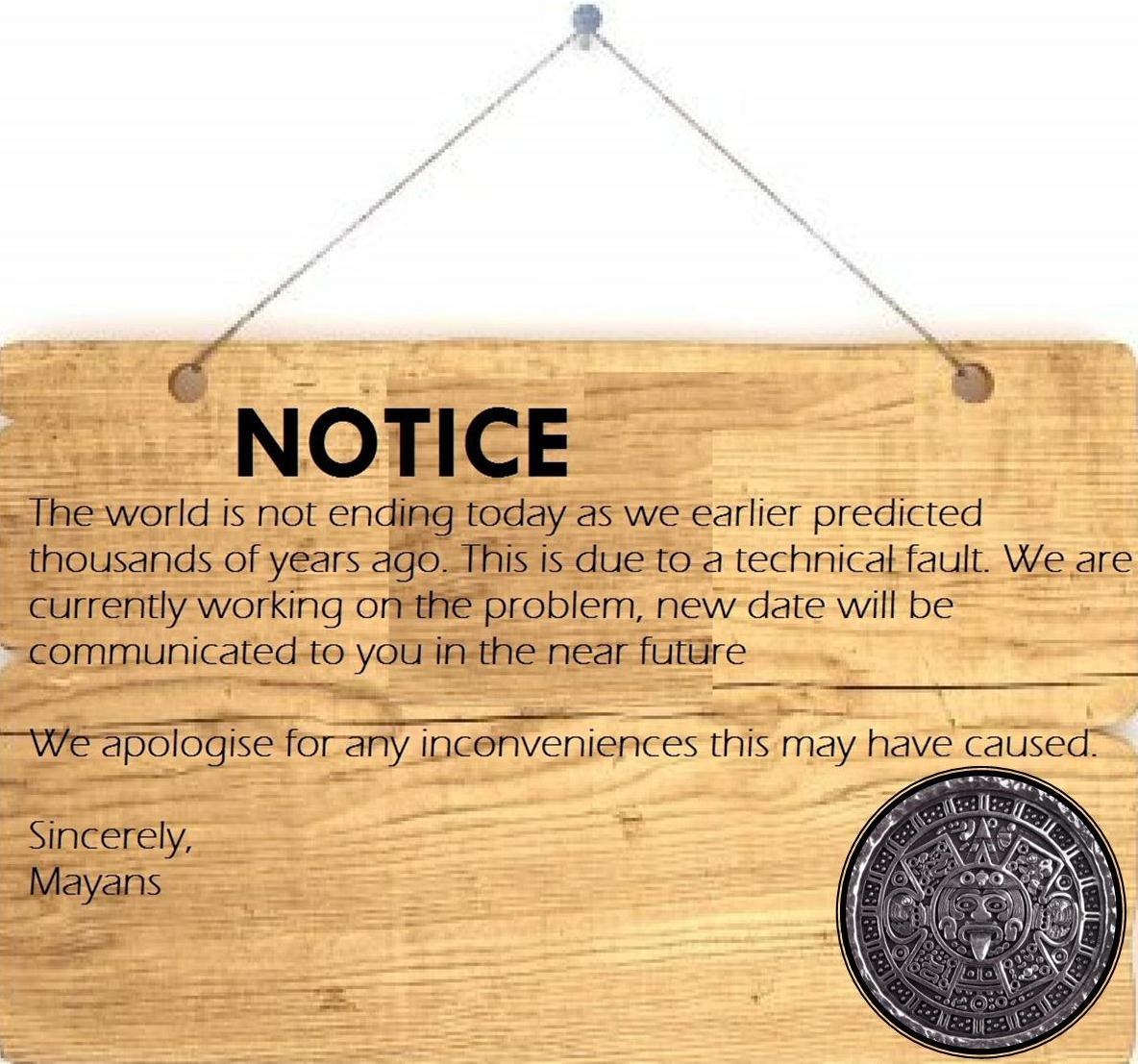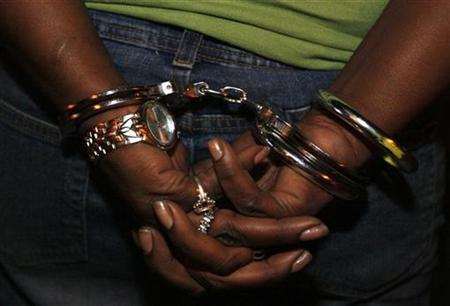One in 10 of us is said to be anxious that 21 December marks the end of the world. The Ancient Mayans predicted this doomsday, and the press is eating it up. But where are all the believers?
That the world will end in 2012 is the most widely-disseminated doomsday tale in human history, thanks to the internet, Hollywood and an ever-eager press corps.
Recent hurricanes, unrest in the Middle East, solar flares, mystery planets about to collide with us – all “proof” of what the ancient Mayans knew would come to pass on 21 December 2012.
According to a Reuters global poll, one in 10 of us is feeling some anxiety about this date.
Russians have been so worried that the Minister of Emergency Situations issued a denial that the world would end.
Authorities in the village of Bugarach in the South of France have barred access to a mountain where some believe a UFO will rescue them.
And survivalists in America – many of whom use the term “prepper” – have been busy preparing for all manner of cataclysm.
So I set out to find people who believe 21/12/12 is D-Day.
It was harder than I imagined, despite seeking out preppers, bunker builders, and even a Mayan shaman.
Eventually I turned to Morandir Armson, a scholar of the New Age and Esoterica at the University of Sydney, Australia.
“If you told me there were more than 5,000 people who genuinely believed the end of the world was coming rather than just having vague fears about it, I’d be surprised,” he says.
Armson adds that those people are probably “in the wilds of Idaho, heavily armed, and won’t talk to journalists anyway”.
The heightened fear around this date is, in his view and that of other experts, almost entirely due to the internet. More specifically they blame the blogosphere.
It is not how the whole 2012 phenomenon started.
In 1987, Jose Arguelles, a man who devoted much of his life to studying the Mayan Calendar, organised what was called the Harmonic Convergence, a sort of post-hippy Woodstock. It attracted tens of thousands around the globe.
The event was an attempt to “create a moment of meditation and connection to the sacred sites around the earth,” says Daniel Pinchbeck, author of 2012: The Year of the Mayan Prophecy.
It was also the beginning of what many in the loosely-defined New Age movement regard as a process in the transformation of our consciousness – a transformation that goes into full effect at the end of this year.
Pinchbeck calls 21/12/12 the “hinge point” of the emergence of a new, more enlightened age – not an ending point for all civilisation.
“It is quite clear that the Mayan system envisages a new cycle of the calendar beginning on the 22 December 2012,” says Graham Hancock, author of Fingerprints of the Gods, and something of a rock star in the world of ancient mysteries enthusiasts.
He says the ancient Mayan culture was a shamanic one. Those who left us the calendar were visionaries who were providing clues to this ending of one cycle and the beginning of another.
That is not to say that New Agers do not see catastrophic events as necessary in some way to this new birth.
In fact they tend to embrace eastern faiths and native cultures with their cyclical views of time. In these visions, the world has been and will be destroyed – to some degree – and we start anew.
Accordingly, some believe the Mayans were sending us a warning for 2012.
“We may see a lot of destruction,” says Pinchbeck. He points to Hurricane Sandy, which recently hit his home city of New York.
Many, including the mayor of New York, Michael Bloomberg, linked that hurricane to global warming, which tends to be seen by New Agers as the main threat to our planet.
However the New Age movement is full of optimists. Crucially, they say we have a choice in how this story ends.
“We do not have to step over the edge of the abyss into darkness and destruction,” Hancock says, calling this point in time a “cusp moment.”
“It’s up to us. It’s totally up to us.”
Morandir Armson, the Australian scholar, says the belief that 2012 marks a positive shift is one also shared by UFO groups, such as the Ashtar Command and the Ground Crew. These groups have no headquarters but for internet sites.
He says they refer to themselves as “lightworkers” who believe a fleet of alien space ships hover around our solar system.
“By doing good works on earth [they believe] you can speed up the consciousness of our humanity,” says Armson.
In many ways, they emphasise the more positive aspects of the traditional Christian Apocalypse. The fire-and-brimstone part gets downplayed in favour of the glorious Kingdom to come.
Some 20% of Americans believe we are in the end times, and that they will see the return of Jesus Christ in their lifetime.
This month marks Advent in the Christian Calendar, during which Christians are encouraged to read from the Book of Revelation, the apocalyptic vision of St John the Divine.
“It’s full of gory and grotesque detail of how the wicked are going to be punished,” says Ted Harrison, author of Apocalypse When: Why We Want to Believe there Will Be No Tomorrow.
The twenty-first of December, however, is not on the biblical calendar and few, if any, believers in the traditional Book of Revelation are attached to this date.
The supposed date of the coming apocolypse, 21 December, also marks the Winter Solstice, symbolic in many cultures of the end of darkness and the renewal of the light.
It might, suggests Harrison, focus our minds on how we have been treating the planet and those on it, and how we could mend our ways.
In this respect, he says, “It might become a self-fulfilling prophecy. That’s one hope. A remote one, but it is one hope.”





No comments! Be the first commenter?